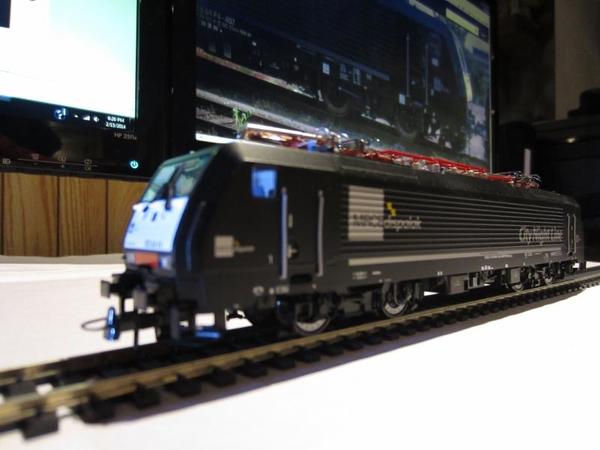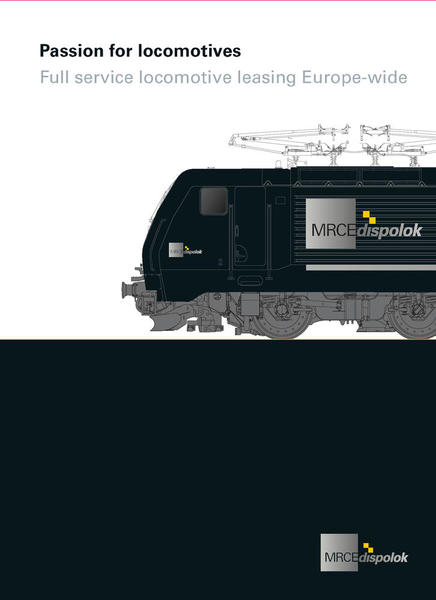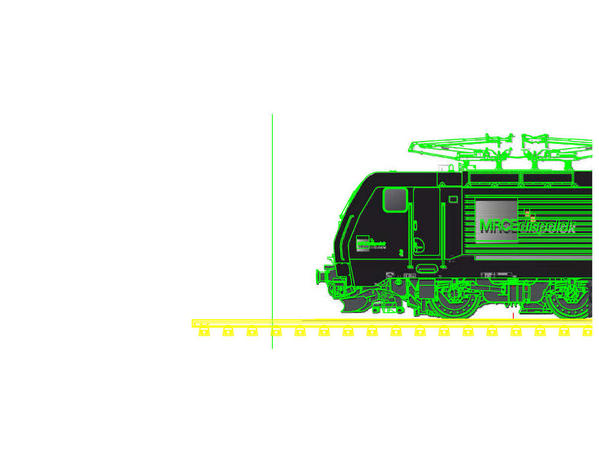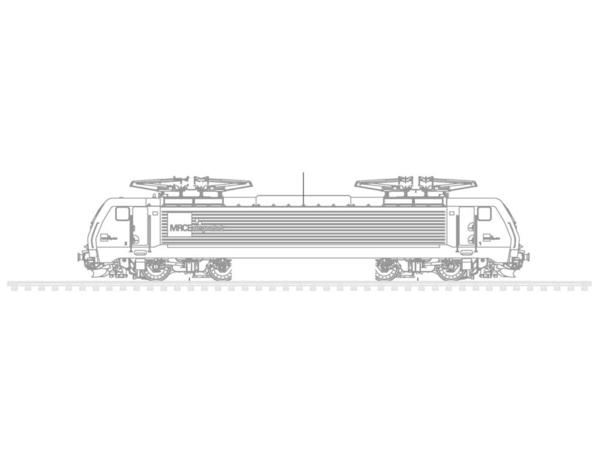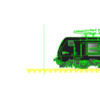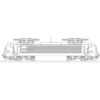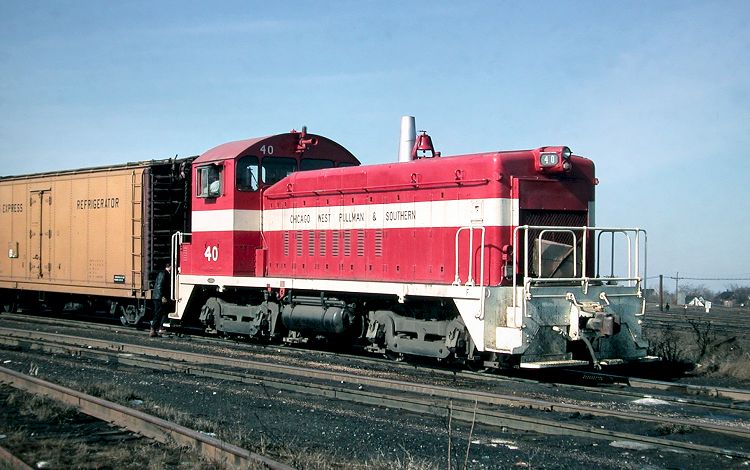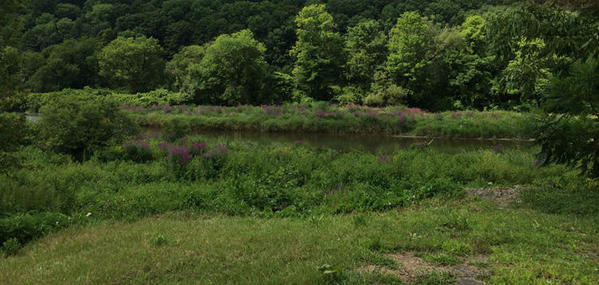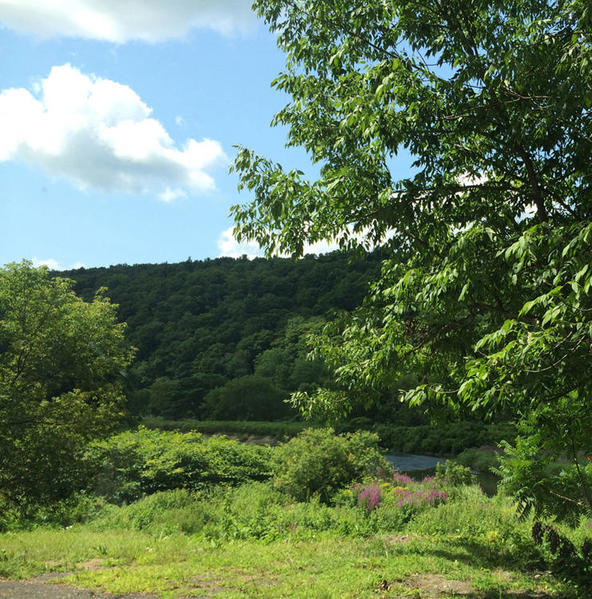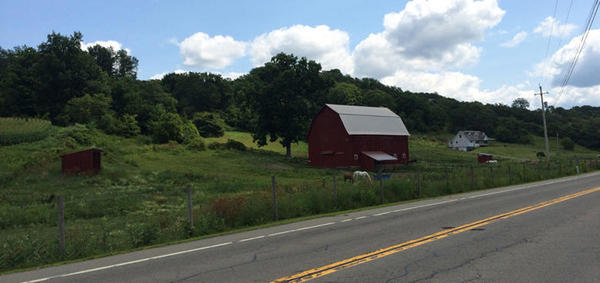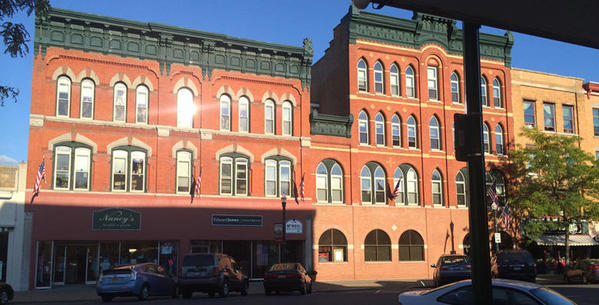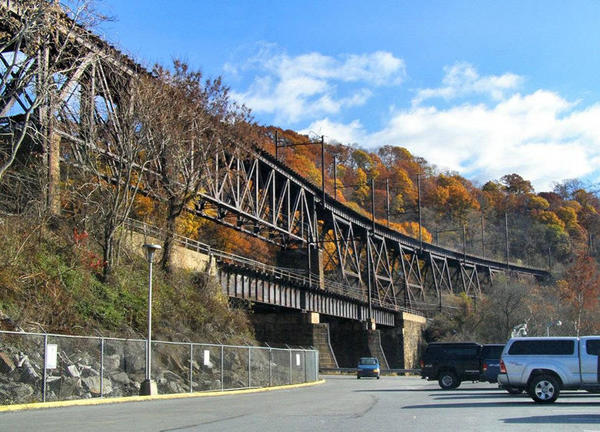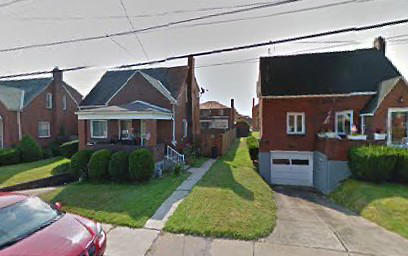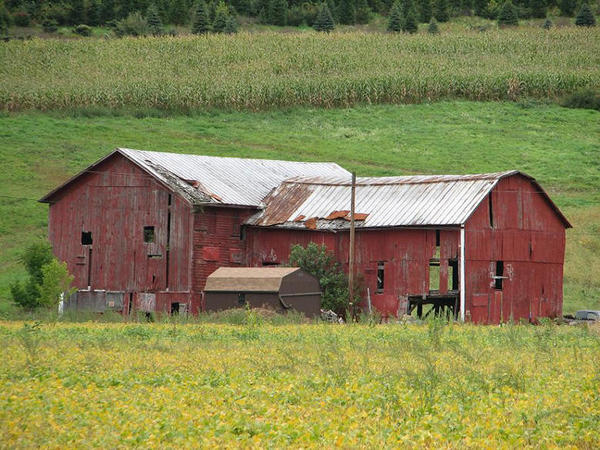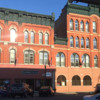Originally Posted by Moonson:
Can you educate me further, please, on what may lie ahead for us in this regard? Would such a printer be capable of reproducing not only structures with the appropriate coloration and weathering but all the foliage and figures and vehicles crafted into any given scene, complete with total, accurate coloration? (Gulp!)
FrankM. (fast becoming a dinosaur?)....
....Would each of the elements (sans trains) of this vignette on my layout, for example, be able to be 3-D'd right into existence, all on one base-plate, or at least reproduced piece-by-piece to have at-hand for use?
I don't think you have to worry about becoming obsolete just yet. As to "what lies ahead" who really knows. I mean, aren't we supposed to be driving around in flying cars by now? But the picture is a little clearer as to right now.
As to "what lies ahead" who really knows. I mean, aren't we supposed to be driving around in flying cars by now? But the picture is a little clearer as to right now.
Question #1 - No, printers cannot print everything in exact colors and exact weathering as seen in your pictures (they aren't that smart yet). In fact, color palattes are quite limited. And the printer neither knows nor cares what color the output should be. Colors aren't intrinsic to the 3d cad file that the item is printed from. They're intrinsic to the media used in the printer. Usually one color at a time, and they don't effectively mix to create the full spectrum of colors. Items can be printed in multiple colors through various techniques, but effectively only in horizontal layers. On FDM printers (fused filament types like the Makerbot), the print process can be paused and filament cartridges switched out to other colors. Printing resumes and anything from that point is printed in the second color. I'm not sure that SLA type printers (resin cured by laser or UV light) have this capability at all unless the supply of resin can be effectively switched and tightly controlled during the printing process. I don't think this is feasible for most consumer level printers, if at all.
The numbers on the clock face below are a good example of this technique. The print was started with white filament, paused, switched to black, and continued.
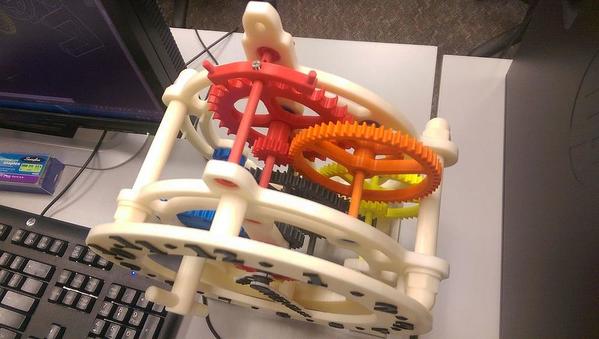
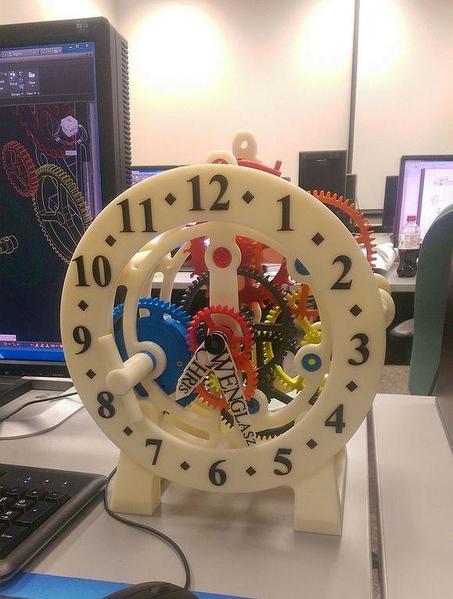
Question #2 - The success of printing organic objects like trees and foliage will depend on the type of printer being used. I'd suggest that it's virtually impossible to print something like leaves on a tree, at scale, with an FDM printer. FDM printers will never handle angles and curves with any degree of refinement. They do quite well with vertical and horizontal planes and surfaces. And FDM printers can only print so small because of the mechanics of the printer head that feeds the filament. Lastly, FDM printed objects can have poor mechanical properties, with strength gained from bonding multiple layers. A leaf or stem might, at scale, actually be smaller than the thinnest width or layer thickness. At some point, scaled objects will just be too fragile when printed.
On the other hand, SLA printers can produce some pretty complex objects. Part of that capability is due to the fact that there is no print head to get in the way. SLA printers usually produce thinner layers (equaling resolution), and mechanical properties are improved over FDM counterparts. Can an SLA printer do O scale leaves? I don't know. Take a look around the Shapeways site to see examples of what can be printed.
Question #3 - Pretty much everything in your last photo can be 3d printed, even the trains. Pretty much anything you can imagine (including 1:1 car and jet engine parts and houses) can be 3d printed if you can create a 3d cad model of it and there are no constraints on printer cost, time, and money. Practically speaking though, some of those things might be better produced using other methods. Most of us aren't buying $100,000 printers to make trains with. 3d printing is an amazing technology, but it's also slow and expensive.
Most of the consumer level desktop printers that hobbyists might use, like the Makerbot (FDM), Form1 (SLA), or B9 (SLA), have relatively small form factors. Even the printers I have access to at school only have print volumes approaching 11" x 11" x 11" or so. The Form1 and B9 print volumes are even smaller. So you might be able to print that interlocking tower or water tank in whole, but definitely not the coaling tower. And probably none of the above on a desktop SLA printer.
Most if not all of the buildings in your photos would probably be easier, faster, and cheaper to create using other technologies like laser cutting or outright scratchbuilding. And in many cases the final product will be better as well. And I have only barely touched on the part about creating the 3d cad model that yields the 3d print. Either you know the software already (awesome and fortuitous), you learn the software (not bad but time consuming), or you pay somebody to use the software for you (obviously less than ideal). About the only advantage with 3d printing with current technologies is the ability to create multiple copies of something. If you can print one, you can print 10. But is that enough to tip the balance in favor of 3d printing. Only you can decide that.
If you look at the last paragraph, it pretty much describes the environment we are already in. At least in the present. So take solace in the knowledge that you are still relevant. For now, think of 3d printing as another tool and resource rather than an end all absolute. My guess is you already employ multiple methods and techniques to produce your scenes. Use 3d printing as a tool when it is appropriate, and select other options when it is not.
Jim
![]() Russ
Russ











